The AMD Ryzen 7: plenty of power, but underwhelming gaming performance
Great for video editors, not so great for gamers.

Ryzen overclocking
With all Ryzen parts shipping multiplier unlocked, many have hoped for a return to the days of buying inexpensive processors and turning them into high-end equivalents with a few tweaks. Certain Ryzen chips definitely benefit more from overclocking, though frankly overclocking so far has been extremely disappointing. All three Ryzen 7 samples I tested failing to get beyond 4.0GHz. That's a bit of a gut punch coming from Intel's i7 line, where all of the K-series parts usually have at least 500MHz of overclocking headroom, and the 6-core and 8-core parts can even overclock by up to 1GHz.
Note that I didn't have a liquid cooling solution for AM4 yet, so I'll need to see if that helps next week. I used the Noctua cooler that AMD sent with the review kit, and cranked the fan speed up to try and cool the CPUs better, but it's probably holding me back a bit. Also, as I mentioned in the gaming benchmark preface, I haven't been able to rerun tests with SMT/HPET disabled on all the chips yet, and AMD suggested disabling SMT for overclocking might get me 100-200MHz higher clocks. These are all areas I'll revisit next week after I've had more time to test Ryzen (and the 1080 Ti). But let's talk about the practical aspects of overclocking Ryzen for a bit.
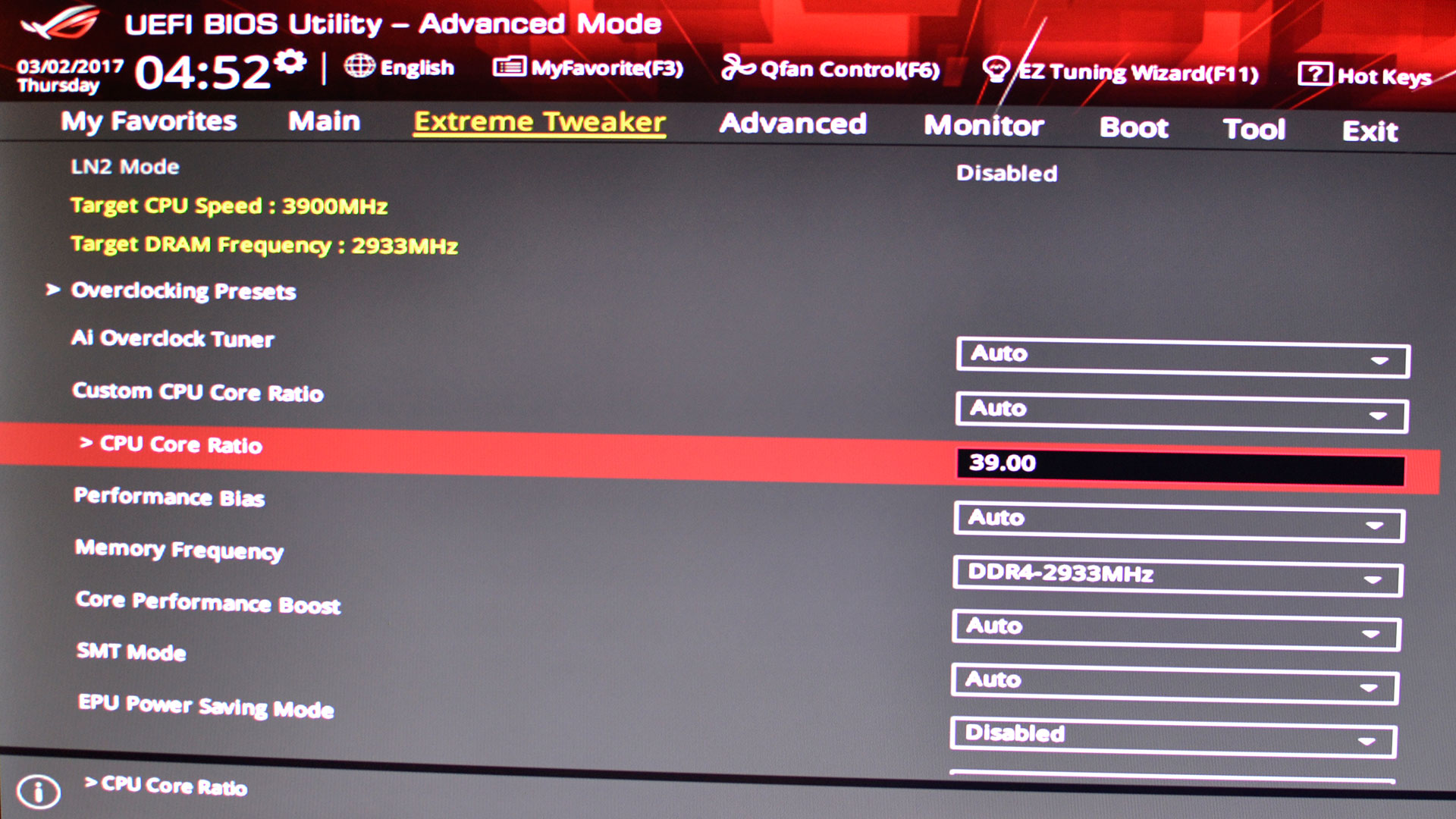
If you've done a lot of overclocking, particularly with Intel CPUs of the past several generations, you probably have some idea of what to expect. Ryzen ends up being quite different in some ways, though the general approach isn't all that different. The biggest oversight right now is that there's no way to set individual core clocks, or even maximum clocks based on the number of active cores. This is a problem, as it means overclocks will always be all eight cores (unless you disable cores in the BIOS).
The strangeness doesn't end there, however. Overclocking also disables thermal limits and all turbo clocks, so potentially you might even lose 100-200 MHz on some CPU models. For example, if an 1800X only runs all eight cores stable at 3.9GHz, the 4.0-4.1 turbo/XFR speeds are no longer available.
What I've found so far, and based on feedback from AMD and some motherboard companies, is that Ryzen's CPU core voltage probably shouldn't be set above 1.4V unless you have really good cooling (and perhaps not even then). The SOC voltage can have just as much influence on overclocking, however, and it should be kept at 1.2V or lower.

The simple approach for Ryzen overclocking, and what I did for these tests, is to set the CPU core multiplier to your target clockspeed, put the CPU voltage at 1.35-1.4V, and set the SOC voltage to 1.15-1.2V. Save and exit the BIOS, restart the PC, and see if it works. If you crash, start turning the multiplier down, which can be done in 0.25X increments.
Advanced overclocking has a few other options, like BCLCK adjustment, but unless you're really striving for the final 1-2 percent performance, I'd just go with tweaking the multiplier. Memory speeds are limited to DDR4-3200 without changing the BCLCK, however, so if you have high-end memory and want to run at DDR4-3600, you can do that via BCLCK, which can typically reach 140MHz and more.
Keep up to date with the most important stories and the best deals, as picked by the PC Gamer team.
Needless to say, Intel CPUs overclock far better than Ryzen is managing right now. If you're looking to push clocks and performance higher, it's not going so well for Ryzen. At 4.0/3.9GHz, I was also seeing CPU temperatures break 90C, so having good liquid cooling is also advisable. Then again, the 1700 chip ran much cooler than the other two CPUs, with temps sitting below 70C even when overclocked. The silicon lottery (ie, luck) is in full effect for the early Ryzen 7 parts.
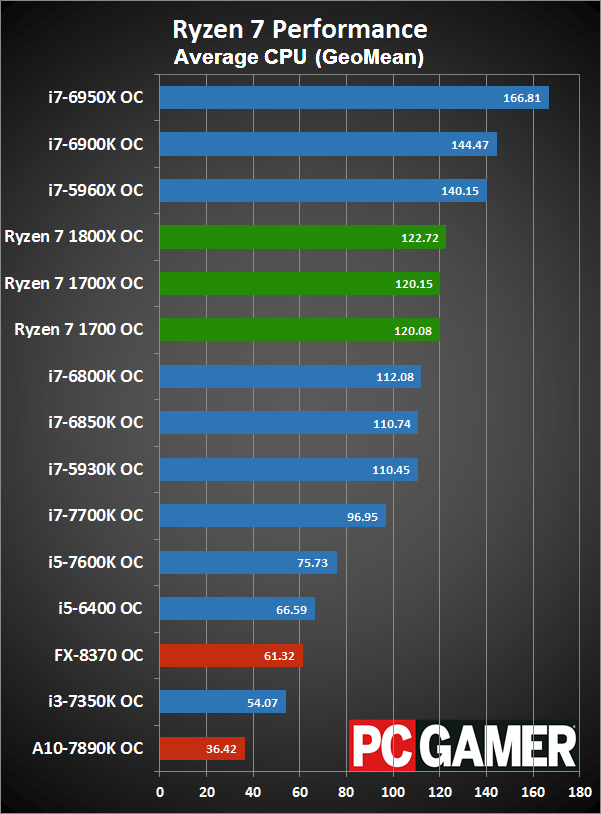


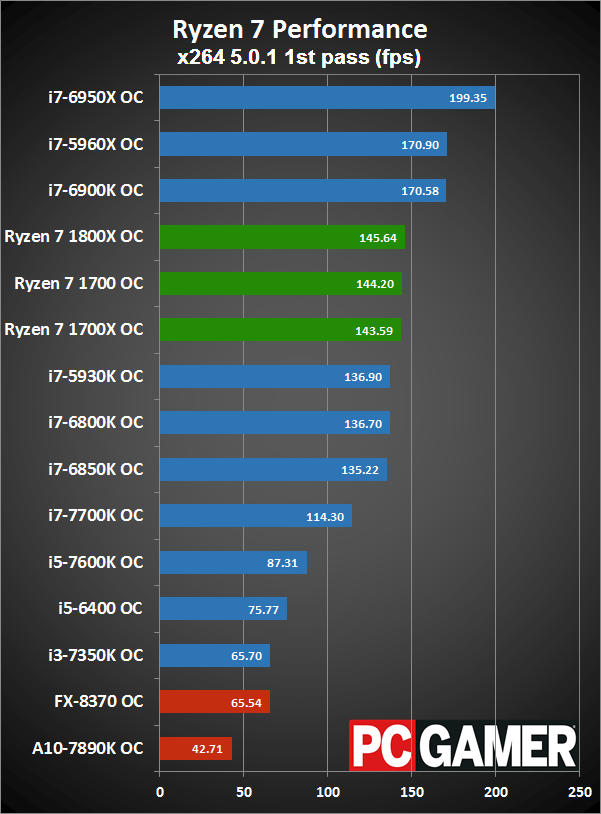




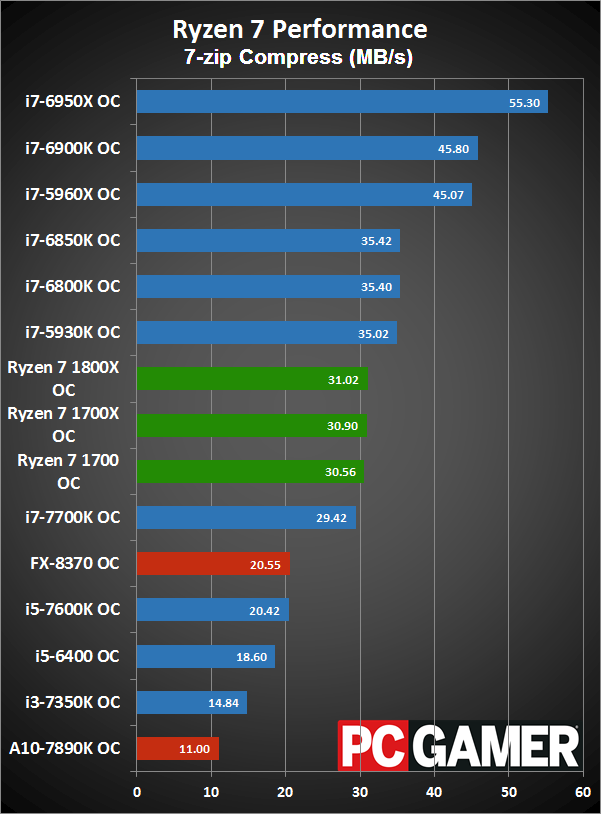
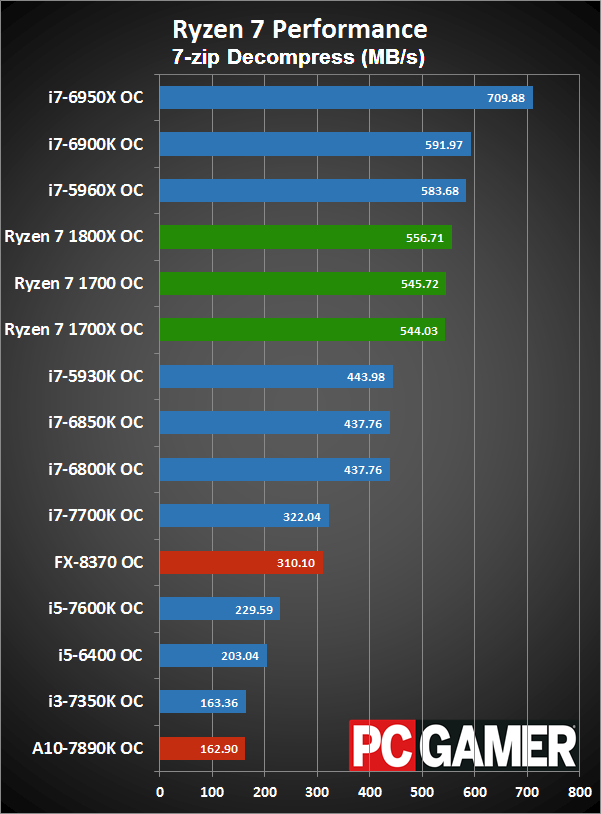
Given the stock clocks, the 1800X ends up being far and away the worst overclocking chip I've ever personally used. It can't do more than the maximum turbo clock, at least with the Noctua cooling, and from what I've heard elsewhere, 4.0GHz is going to be a common limit for 8-core Ryzen overclocks. The 1700X is a bit better, though my sample failed to run stably at 4.0GHz and I dropped it to 3.9GHz. The 1700 also ended up at 3.9GHz, but it has much lower base clocks, so it benefits quite a bit. With all three Ryzen 7 chips running at the maximum (within 100MHz) stable overclock I could achieve, performance is mostly a tie—the 100MHz advantage for the 1800X gives it about a two percent advantage.
If those overclocks seem awfully low, consider for a minute the LN2 (liquid nitrogen) overclocking results from AMD's Ryzen Tech event. AMD had several professional overclockers working on day to see how far they could push Ryzen with extreme cooling. The highest result I saw was around 5.35GHz, which is well shy of the 6.2GHz many have managed with LN2 on i7-5960X. The 5960X does 4.5GHz pretty reliably with good liquid cooling, or about 72 percent of what LN2 could achieve. Ryzen hitting 4.0GHz is a pretty similar ratio of liquid vs. LN2 overclocking.
Looking at the various benchmarks, single-threaded performance definitely favors the higher clocks you can get on Intel processors. Ryzen still does fairly well in most heavily-threaded (especially considering the price), and the extra cores keep all three overclocked chips ahead of the 6-core and 4-core Intel parts in most of the benchmarks. The only two exceptions are y-cruncher and 7-zip compression, for the same reasons I cited earlier.
What about overclocked gaming performance? I don't have final data, but earlier results (with SMT) show just over a two percent improvement in gaming performance for the 1800X, a three percent increase of the 1700X, and the 1700 gets the biggest benefit and ends up gaining six percent. Intel sees pretty small gains on all their Core i7 parts, though performance remains slightly higher from what I'm seeing. In other words, don't overclock Ryzen for gaming purposes and expect huge benefits.
Current page: Ryzen overclocking
Prev Page Ryzen gaming performance preview Next Page Ryzen: the best is yet to comeJarred's love of computers dates back to the dark ages when his dad brought home a DOS 2.3 PC and he left his C-64 behind. He eventually built his first custom PC in 1990 with a 286 12MHz, only to discover it was already woefully outdated when Wing Commander was released a few months later. He holds a BS in Computer Science from Brigham Young University and has been working as a tech journalist since 2004, writing for AnandTech, Maximum PC, and PC Gamer. From the first S3 Virge '3D decelerators' to today's GPUs, Jarred keeps up with all the latest graphics trends and is the one to ask about game performance.


